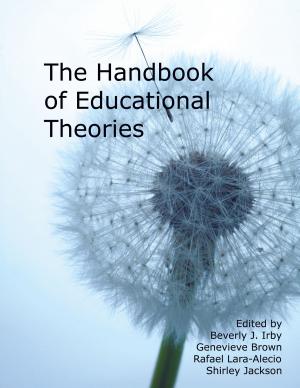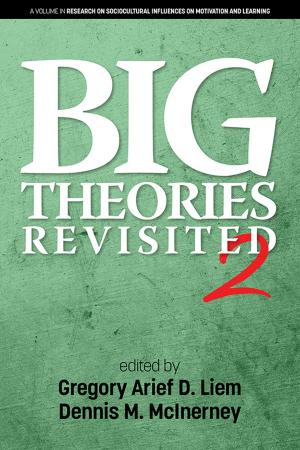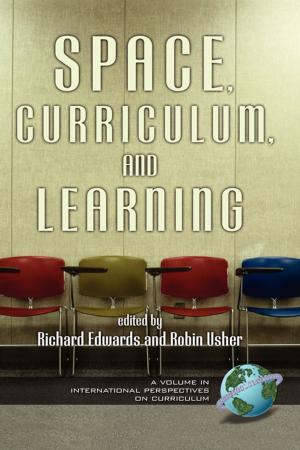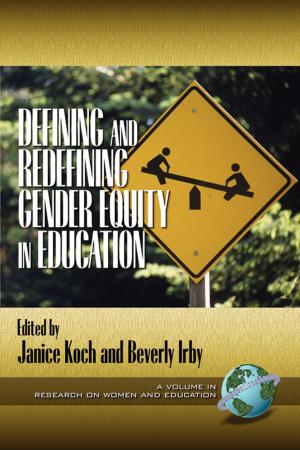Inquiry in the Classroom
Realities and Opportunities
Nonfiction, Reference & Language, Education & Teaching, Higher Education, Administration| Author: | ISBN: | 9781607526308 | |
| Publisher: | Information Age Publishing | Publication: | November 1, 2007 |
| Imprint: | Information Age Publishing | Language: | English |
| Author: | |
| ISBN: | 9781607526308 |
| Publisher: | Information Age Publishing |
| Publication: | November 1, 2007 |
| Imprint: | Information Age Publishing |
| Language: | English |
The purpose of this text is to further flesh out some of the factorsspecific dimensions of our ndimensional hyperspaceimportant to inquiry in the classroom. As such, some of the of the factors have already been introduced, others will be new to the conversation. In our discussions that lead to the preparation of this manuscript, it became clear that each of us was interested in classroom inquiry, and so we each wanted to situate our analysis in these classrooms. For that purpose, our discussions are organized into sections. Each section begins with one (or more) vignettesnippets of science classroomsthat the authors then discuss how this vignette demonstrates some aspect of the specific dimension that they are charged with discussing. Because inquiry is so multifaceted and its portrayals are often complex and nuanced, the discussion of the dimension is broken into separate essayseach of which addresses the focal dimension in different ways. Following the essay, a broader discussion across the essays is offered to support your sense making. As we began this effort, we selected what we understood to be the most influential dimensions of inquiry in the classroom. But certainly there are others that can and should have been included, (i.e., the role of curriculum in supporting (or confining) the enactment of inquiry, the manner in which inquiry can shape students' knowledge, the role systemic efforts can have in enabling inquiry). But given the confines of one text, we've chosen what we understood to be the central components, and these have been arranged into 6 sections. Our vision is that each of these sections can be selfsupporting, so their appearance in the text doesn't represent the order in which they must be read. Ideally, the reader would engage in the introduction, then select the section that addresses the dimension influencing classroom inquiry that is of greatest importance. The only exception to this is section 6, which is a specific form of enactment of classroom inquiry; engagement with this section may be best augmented after reading the sections that interest you.
The purpose of this text is to further flesh out some of the factorsspecific dimensions of our ndimensional hyperspaceimportant to inquiry in the classroom. As such, some of the of the factors have already been introduced, others will be new to the conversation. In our discussions that lead to the preparation of this manuscript, it became clear that each of us was interested in classroom inquiry, and so we each wanted to situate our analysis in these classrooms. For that purpose, our discussions are organized into sections. Each section begins with one (or more) vignettesnippets of science classroomsthat the authors then discuss how this vignette demonstrates some aspect of the specific dimension that they are charged with discussing. Because inquiry is so multifaceted and its portrayals are often complex and nuanced, the discussion of the dimension is broken into separate essayseach of which addresses the focal dimension in different ways. Following the essay, a broader discussion across the essays is offered to support your sense making. As we began this effort, we selected what we understood to be the most influential dimensions of inquiry in the classroom. But certainly there are others that can and should have been included, (i.e., the role of curriculum in supporting (or confining) the enactment of inquiry, the manner in which inquiry can shape students' knowledge, the role systemic efforts can have in enabling inquiry). But given the confines of one text, we've chosen what we understood to be the central components, and these have been arranged into 6 sections. Our vision is that each of these sections can be selfsupporting, so their appearance in the text doesn't represent the order in which they must be read. Ideally, the reader would engage in the introduction, then select the section that addresses the dimension influencing classroom inquiry that is of greatest importance. The only exception to this is section 6, which is a specific form of enactment of classroom inquiry; engagement with this section may be best augmented after reading the sections that interest you.















